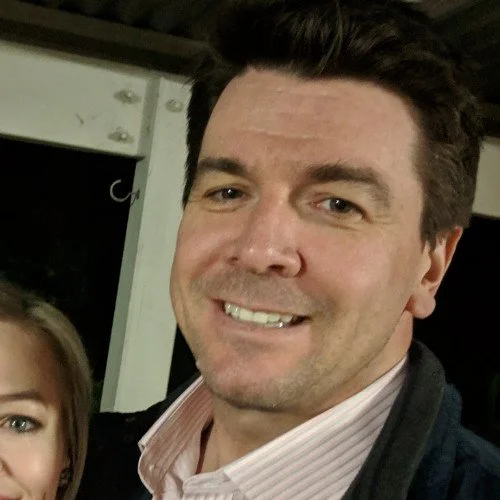
PRISM
DELIVERING THE RIGHT SCOPE. ON TIME. EFFICIENTLY.
Background:
As Woodside Energy (ASX:WDS) facilities age, the challenge to allocate finite planning effort across mounting scopes of work increases. Poor prioritisation, exacerbated by bias in decision-making can lead to a misallocation of resources and capital. This can result in unscheduled maintenance, increased expediting costs and non-productive downtime.
Prism is an intelligent, end-to-end scope management application that supports Woodside Energy with insights and digital capabilities to deliver the right scope, on time, efficiently.
Business Goals:
Generate a trusted and adopted prioritisation metric that reduced backlog
Empower user decision-making by generating consumable insights and suggesting remedial actions
Reduce the overall effort and duration to plan simple maintenance scopes
User Goals:
Select the right maintenance, balancing risk and execution efficiency
Seamless integration between enterprise systems, cloud services and the app
Align stakeholders across the end-to-end maintenance process from a single interface - some 1,500km away.
“Darrsh’s approachable style, curious mindset and outcomes focus means that people enjoy working with him. As a result, I often see him as a central axis helping align the squad to the product vision.”
— Michael Richards, Woodside Energy Production Excellence Manager
The approach:
background:
Ensuring operating assets are running as close to optimal is critical for safe, reliable and efficient production. However, when an asset has a 30-year old growing backlog work, how are team able to adjust their maintenance responses accordingly?
In 2020, our Maintenance Planning squad was tasked with exploring opportunities to reduce the effort of planning low-complexity and routine maintenance; constituting around 70% of all maintenance scopes.
The problem space was well acknowledged throughout the organisation, and the business encouraged innovative and blue-sky solutions. Our cross-functional team set out to deliver transformational change for Woodside Energy.
research and iteration:
Our approach to research was Designer-led but wholly owned by the squad. Industry subject matter experts embedded within the squad had years of experience extracted through a 2-week blueprinting exercise. Developers sought to understand the enterprise architecture and API’s that would later be leveraged to accelerate development.
These activities identified foundational pain points linked to problem hypothesis, which were validated via:
Interviews and surveys with business stakeholders along, up and down the maintenance process
Data analysis via SAP transactions to identify quantitative measures of inefficiency
Contextual enquiry at operating facilities to observe daily tasks and meetings
Once pain points were quantified and prioritised, the squad entered an ideation phase were Designers led Big Idea Vignettes and Prototyping sessions to encourage and test thinking. This iterative process was conducted with sponsor users biweekly, rapidly validating and invalidating our design direction.
journey mapping:
Though Prism has garnered praise from critics within and outside of the business, it was important for us to reiterate that the application was built to enable a reimagined, streamlined planning process.
To elucidate this concept for users and critical support roles, a customer journey map was generated to capture the interface between process and technology. With a Maintenance Coordinator as the central actor, we followed their actions through the process and documented interactions with Prism and associated uplift.
Just as important as it was to show touchpoints, it was equally important to show where the business could expect little to no uplift. This assisted in communicating limitations, particularly in a business where past digital solutions had fallen short of expectations.
brand identity:
It’s no secret that Woodside Energy encourages its people to think big, and often encourages the materialisation of their ideas. This manifested in an app heavy ecosystem. The true challenge for us was to justify needed to create another app!
Through our research, we found that these initiatives had been conducted in silos and no one has yet taken a look at how each impacts the maintenance process. We saw the need to leverage the work of other teams, and converge the many sides of maintenance to a single point - Prism.
The pentagon signifies the different sides of maintenance - people, parts, permits - and their coming together to deliver maintenance for Woodside Energy. It also sought to ‘focus a light’ where it was needed - letting the application trawl through thousands of data points to present actionable insights.
designs:
Low fidelity designs were constructed using Figma to test conceptual user flows first. This was critical for process-centric problem space. We at times struggled to break the user’s mental models, particularly in an industry where detail is everything. Another challenge was the number and permutations of data-points that Maintenance Coordinators rely on to make an effective decision.
Through repeat sessions, our users became comfortable with the ambiguity of conceptual prototype tests, and would often message the team with ideas once they had time to soak on a concept. The insights were learned from these prototype tests were shared with the squad at a fortnightly ‘Design Playback’.
Once an idea and user flow was validated, construction of high fidelity designs commenced using the MUI X component library which was selected for ease of implementation and it's data grid capabilities. MUI X was in fact not the library of choice at Woodside Energy, however we were able to demonstrate its capabilities which resulted in broad program adoption.
Working in a fishbowl environment with developers, architects and workflow engineers was invaluable in moving ideas from users, to designers, to developers, and finally to the application interface.
the results
Reduced overall planning duration, selection effort and readiness effort.
Highest ROI digital product within Transformation Program.
Featured application in Woodside Annual Report and Media Centre.
Featured in the IBM Garage global Case Study on Woodside Energy.
Selected extended abstract and feature presentation at the 2023 APPEA Conference.
what could have been better
Keeping one eye on where this application was heading - as appetite from the business grew, UI hierarchal changes were necessary to support an evolving UX.
Establishing a Tick-Tock production model for our releases to ensure well-rounded features are delivered on time and then consolidated.
Seeking extra support from the business for education and training requirements, which grew legs as the product scaled and became more robust.
my role on this project
End-to-end desktop experience and its interface design.
Collaborate with POs, Developers, Engineers, Design Chapter.
Led design team on visual assets, branding and communications.
Conduct user research and usability testing.
Facilitate design workshops and stakeholders interview.
Linking insights to value framework for business sign-off.
PROJECT TEAM
About Woodside energy
Woodside Energy (ASX:WDS) is a global energy company, founded in Australia with a spirit of innovation and determination.















